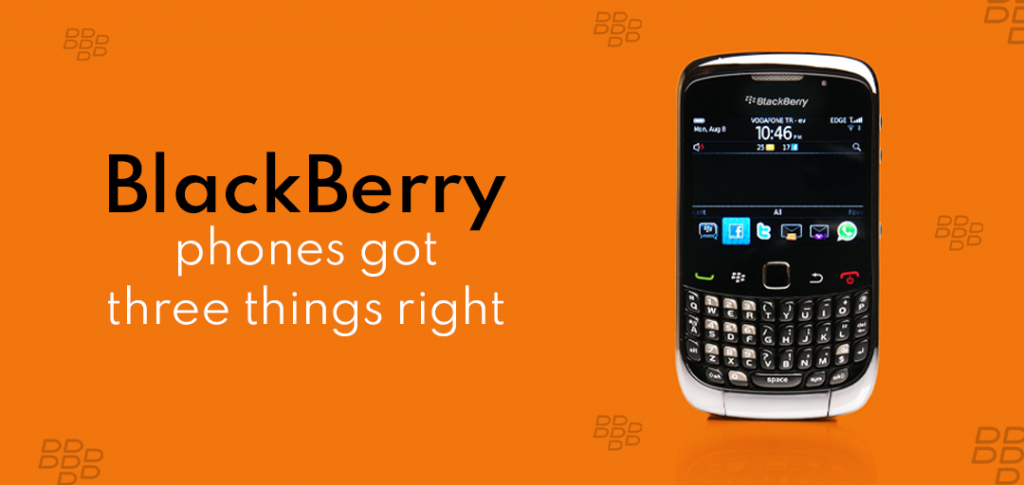BlackBerry phones were a staple in the mobile industry for a long time. They had a lot of perks and flaws. However, if you still have a Blackberry device around, it’s time to discard it since as of January 4 the devices have been shut down by the company.
In this article, we will discuss 3 things BlackBerry phones got right and 3 things they didn’t. The list is not exhaustive but it will cover some major points about BlackBerry phones that made them so popular.
Commendable Features of the Blackberry Phones
- ‘Look at me’ Light
The tiniest things may often have the greatest influence. This was never more true than with the blinking notification light, which we still need today. Although Android phones provide an always-on display, nothing compares to our classic rose-tinted eyes.
Green signified “you are online,” blue meant “Bluetooth,” and red meant “Hey!” You might also personalise it. This was the gold standard in personalising back when anything more than a polyphonic ringtone was considered a luxury.
- Keyboard
The keys had a satisfying clack and were haptic. It’s not too little, but it’s not too big either. We could communicate with one or both hands, and they always appeared to understand what we were trying to say. Even after toying and failing with touchscreens in subsequent years, BlackBerry returned to the keyboard because that was what the people wanted. Good to see you again, old pal.
Other devices attempted it, including Motorola’s Q, HTC’s ill-fated Facebook ChaCha phone, and a few more. However, they were invariably terrible rip-offs. The keys were said to resemble Blackberry seeds, thus the company’s name.
- Messages
BBM was the driving force behind many of us purchasing a BlackBerry. A password-protected, ultra-secure messaging service that allowed users to transfer files, Share SMS and DM people or groups. It was a hit with business users, but much more so with teenagers and millennials.
If you don’t get a response to your message right away, you may PING the individual, which is essentially the digital equivalent of continuously annoying them until they respond.
Time, on the other hand, does not wait for anybody. BlackBerry’s unwillingness to open up to other platforms contributed to the company’s demise. With cross-platform solutions like WhatsApp on the horizon, it was too late for BBM to make itself available elsewhere.
What Blackberry got Wrong
- App Store a Major Let-down
BlackBerry App World was the most rudimentary app store available on a smartphone. What a disappointment.
Surprisingly, BlackBerries have always been open, allowing for the installation of third-party programmes with surprising simplicity. Apple and Android, on the other hand, provided us with handpicked, controlled stores. RIM was next, and it failed miserably, hurting our hearts.
Some programmes, such as Screen Muncher (a fun screenshot tool and a personal favourite of ours), provided additional capabilities to BlackBerry. But it was like looking for a diamond in the muck of a muddy river and not even finding a speck of glittering plastic.
- The “Storm”
Verizon was exerting pressure on BlackBerry to come out with competition due to rising pressure from iPhone sales hitting the big carriers in the United States.
If you’re unsure, just say no. “Sure, here’s the Storm,” BlackBerry said. And the name of a phone has never been more apt. We’re sorry to report, but it was one of the worst phones we’ve ever seen. It was, nevertheless, one of the worst phones ever made.
The concept was simple: a slab, similar to the iPhone. However, it was developed in a hurry and at a fraction of the R&D budget. BlackBerry customers’ favourite keyboard was replaced with an on-screen version that required the entire screen to be squeezed in for each touch.
When the phones started malfunctioning in the thousands and Verizon insisted RIM pay to fix them, it was a catastrophe for the user interface and a disaster for RIM’s financial line. The subsequent devices didn’t help either and users began to lose faith in the company.
- Stagnancy
As the saying goes, pride comes before a fall. BlackBerry had to learn this the hard way. You can’t remain still and expect to stay on top, yet RIM found itself doing exactly that.
We couldn’t get push email on the iPhone when it first came out. It seemed unfathomable to believe that Microsoft-powered Exchange servers, which are popular in the business sector, would be accessible on an iOS smartphone. There were no third-party applications, but BlackBerry users could easily install programmes downloaded from the internet. And the keyboard appeared to be far more difficult to operate than the tried-and-true BlackBerry keyboard.
And it was the beginning of the end for BlackBerry as soon as Steve Jobs opened up the iPhone to outside developers and other networks. Developers could profit from a product that was in high demand across the world. Nobody wanted to write for BlackBerry because of the company’s decreasing customer base. BlackBerry’s time has come to an end.

